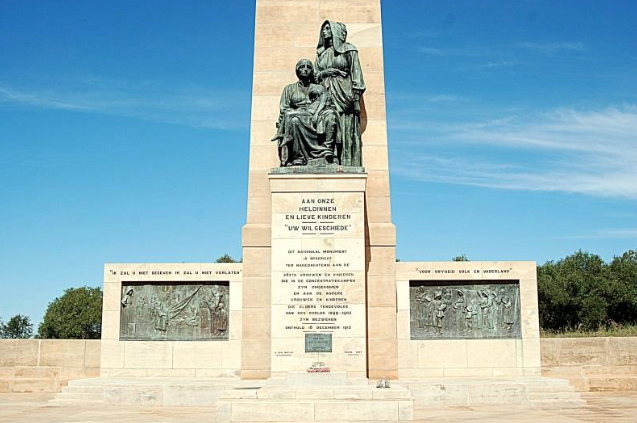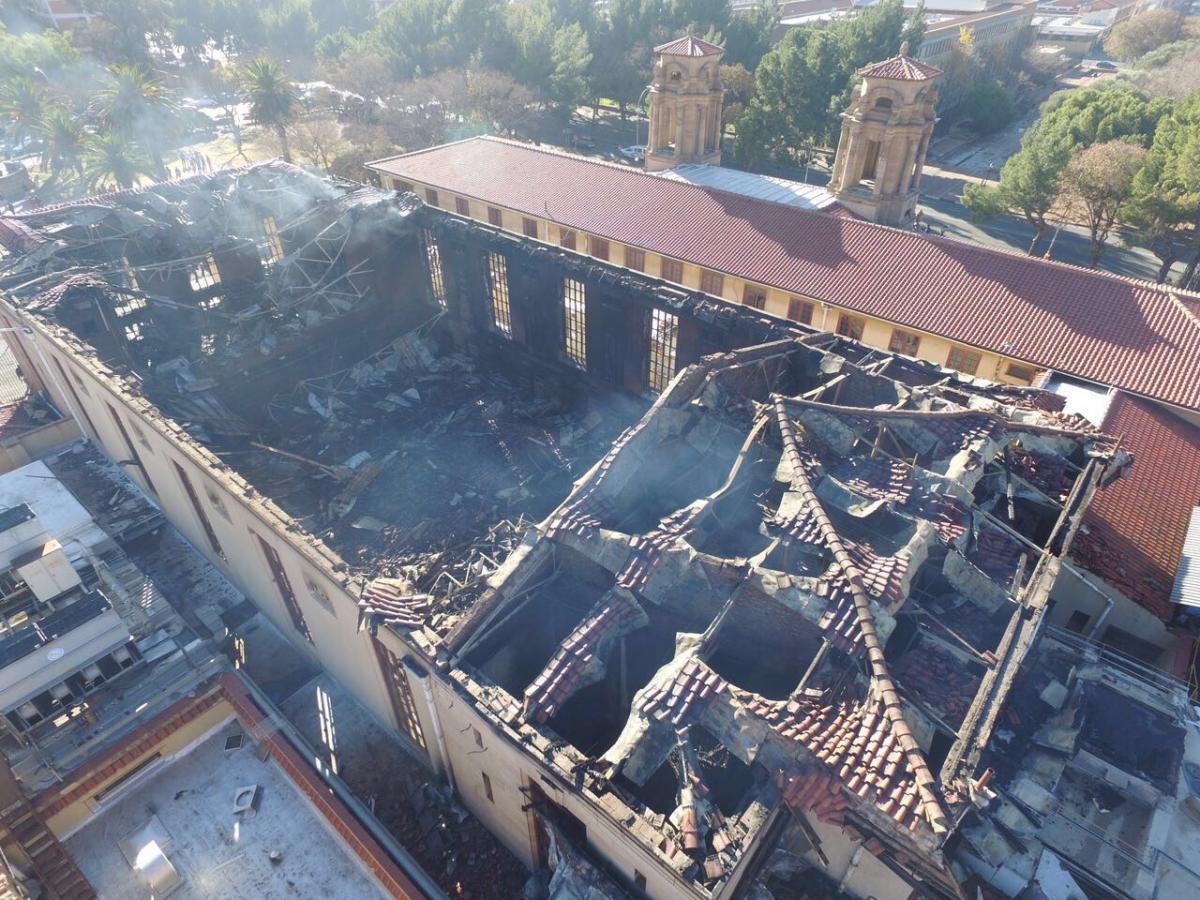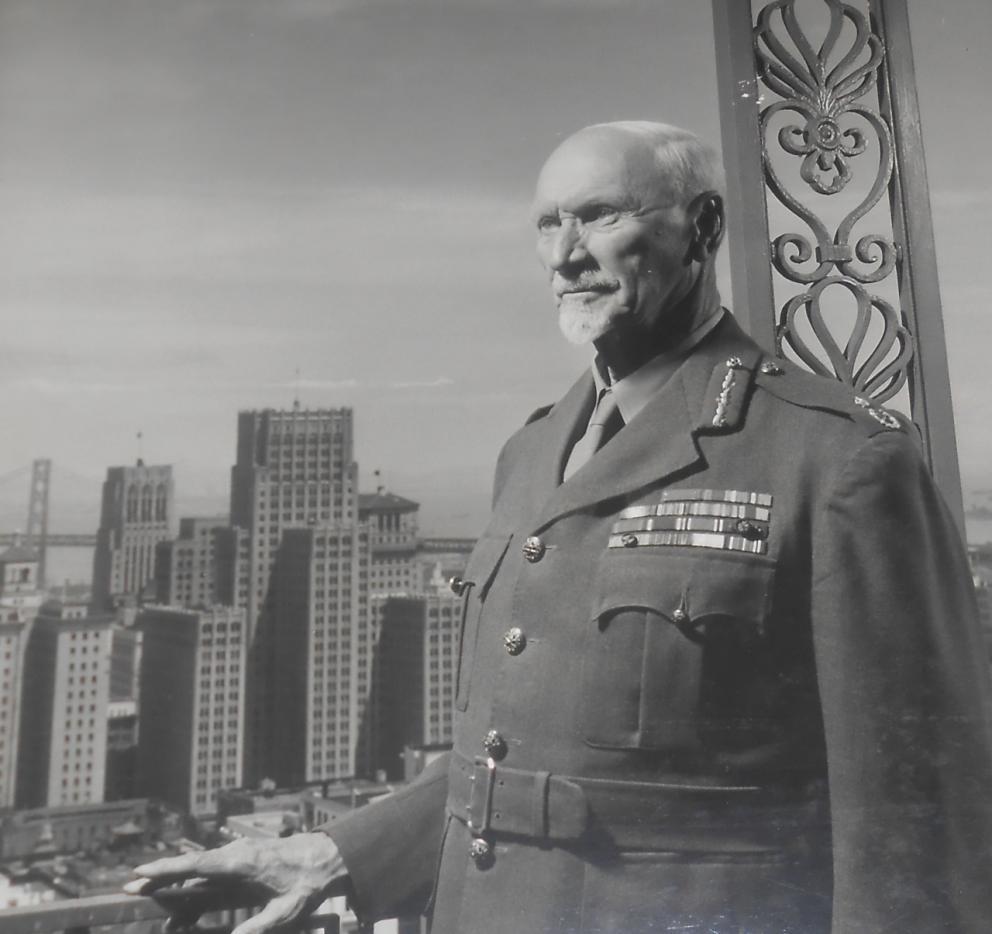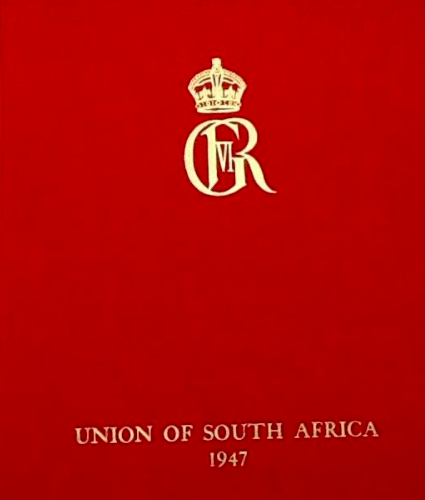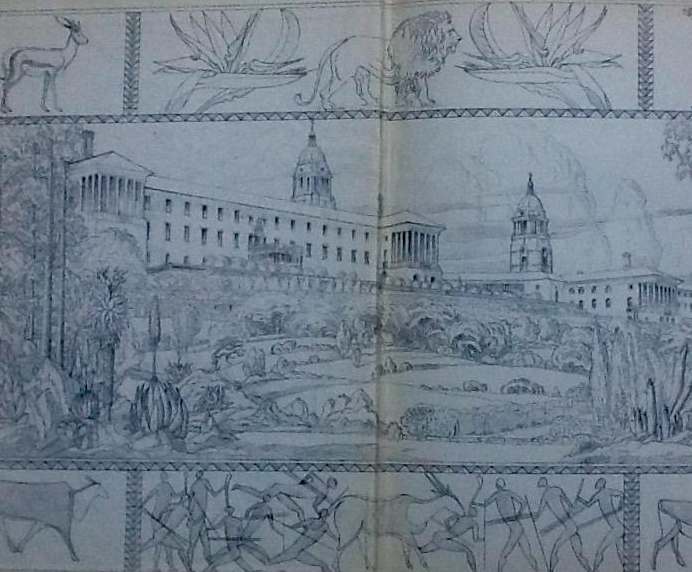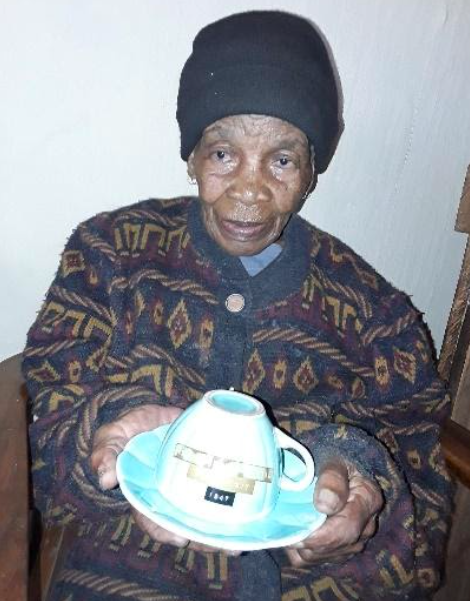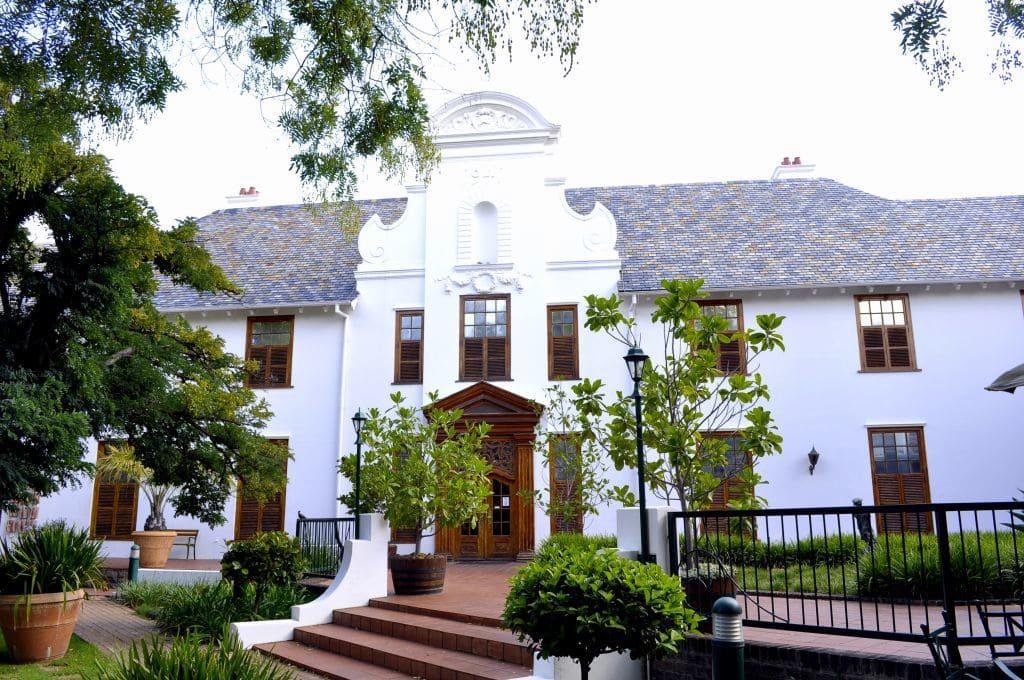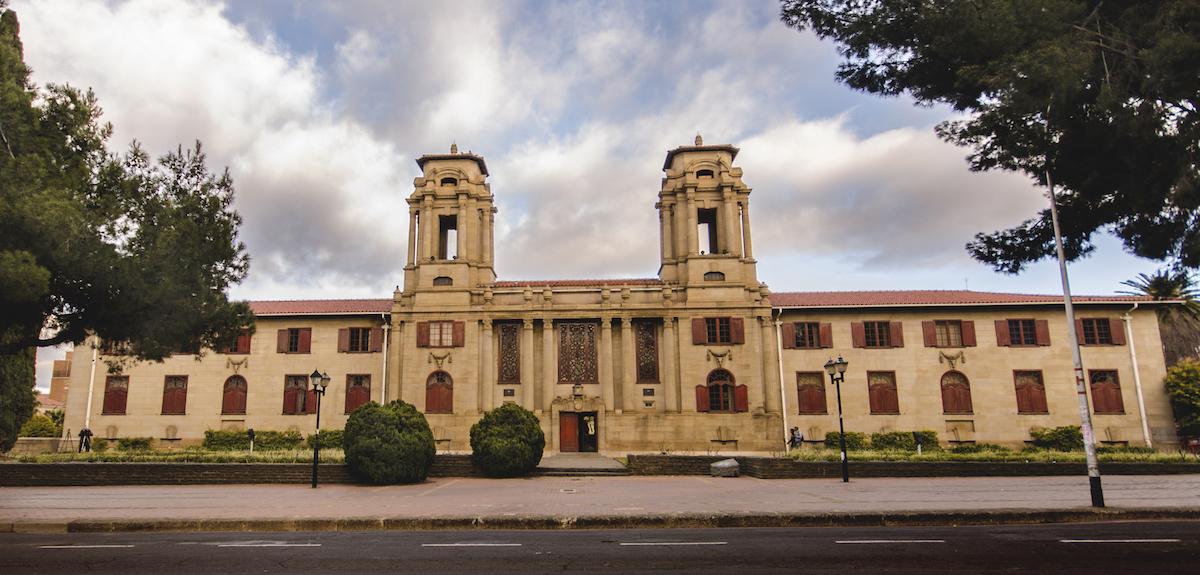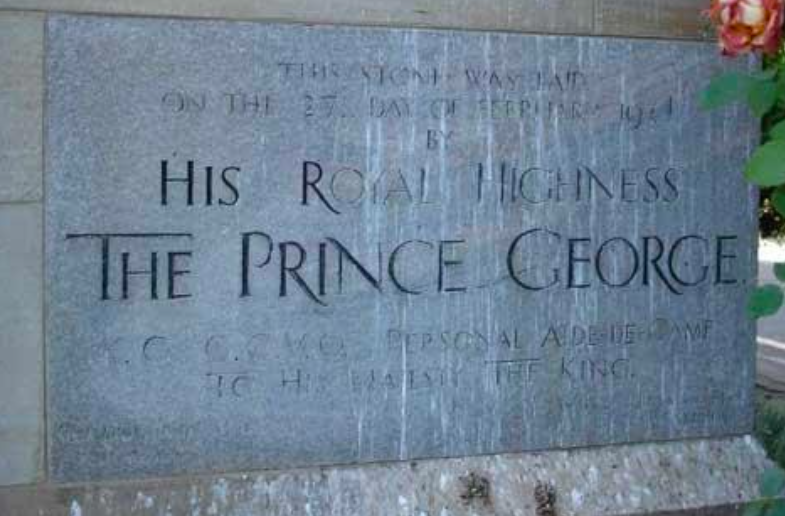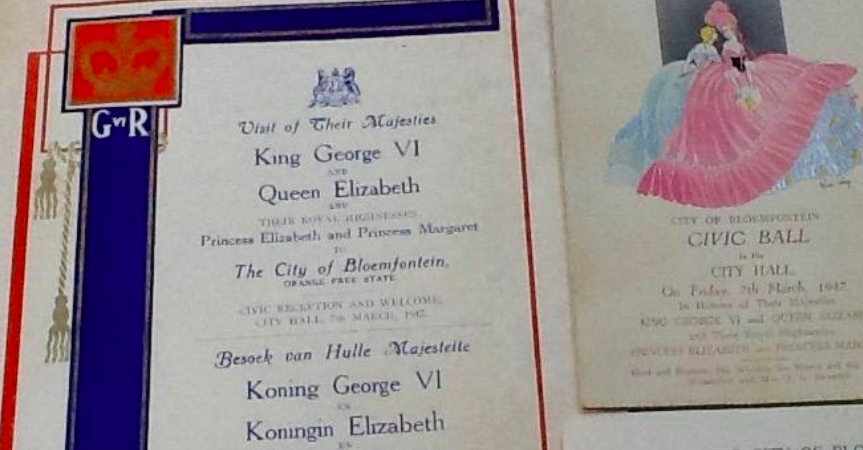
Disclaimer: Any views expressed by individuals and organisations are their own and do not in any way represent the views of The Heritage Portal. If you find any mistakes or historical inaccuracies, please contact the editor.
One does not normally associate Bloemfontein with Royalty, but Bloemfontein, located in the centre of the country (and despite its Boer republican history), was always on the itinerary for that cluster of 20th century British Royal tours. It was included in the series of Royal perambulation around South Africa in 1925 (the Prince of Wales), 1934 (Prince George, later Duke of Kent) and 1947 (King George VI, Queen Elizabeth and their family).
Each visit was a frenetic two days of parades, visibility to all the citizens of the city, showy displays of public entertainment and a series of functions to which the elite of the city were invited. The Royal guests were the centre of attraction and republican politics largely set aside in an effort to show off this interior capital.
There was great excitement in Bloemfontein in 1947 when King George VI, Queen Elizabeth and the two princesses, Elizabeth and Margaret, steamed into the Bloemfontein station for a weekend of festivities, receptions, a dinner and a Free State short flight and authentic farm braai and game drive at Bultfontein. The Royal entourage was given a surprisingly warm welcome considering past republic history and the political divisions between English and Afrikaners and in the context of the rise of Afrikaner Nationalist sentiment that would culminate in the dominance of the National Party Government in 1948.
Bloemfontein is still a city of charm and visible mix of history - it was the capital of the Orange Free State Boer republic, (1895-1902); it was the birthplace of JRR Tolkien (1892), it was the capital of the Orange River Colony (1902-1910), the ANC was founded in Bloemfontein (1912), the National Women’s Monument designed by Anton Van Wouw commemorating the women and children who died in the Anglo Boer War (1913) is there. After Union, Bloemfontein became the judicial capital of South Africa with an august Supreme court of Appeal building (1929). Bloemfontein has some impressive architecture such as the Raadsaal and the City Hall (built in 1935 but heavily damaged by fire in 2017). Bloemfontein still has the feel of an important place with an international airport, some significant churches; fine schools - it is still an educational centre of note and the city now has the 8 metre high Nelson Mandela statue on Signal Hill overwhelming the town.
National Women’s Monument (via Wikipedia)
Bloemfontein City Hall after the fire (Christoff Steyn)
Let’s go back in time and allow these charming invitations to open a window on another world when the focus was on a white led union with goodwill towards all and reconciliation of English and Afrikaner. The title of Graham Viney's book on the Royal Visit to South Africa, The Last Hurrah, captures the poignancy of that final flutter of monarchical obeisance orchestrated by the Prime Minister and war hero, General Jan Smuts, the year before he lost power to the Nationalists and South Africa headed into the wilderness years of apartheid.
Jan Smuts
Bloemfontein, had a white population at that date (1947) of 30 005, but with possibly 10 000 English speakers who were the most likely to stand in the hot sun to cheer the Royal cavalcade. In fact the Bloemfontein visit was widely supported and whilst there was an attempt to talk down the panoply of show in Die Volksblad, the newsreels of Pathe show enthusiastic support from cheering crowds lining the route as the royal Daimler passed, school children waved flags and old ladies were overcome with heat and having a fainting spell. As Graham Viney comments we don’t know whether they were English or Afrikaans speaking, but they were there to catch a thrill at the sight of royalty.
A small collection of mementoes from the Bloemfontein 1947 Royal visit have come to light. The collection comprises three invitations and the official Bloemfontein civic programme for the welcoming reception for the Royal family and other events at the Bloemfontein City Hall. The Saturday civic reception had been preceded by a Friday afternoon Garden Party held at the Prince's Garden, Kings Park followed by a grand civic ball in the City Hall on the Friday evening in Honour of the King, Queen and the two princesses. The Royal couple themselves hosted a dinner on the Saturday evening at Government House for a small group of local worthy dignitaries.
A small delight is the dance programme listing the 24 dances. When a gentleman requested and reserved the pleasure of a particular dance with a special lady his name was pencilled in with the miniature pencil. It was considered unsociable and rude for a couple to take to the floor for every dance. Ladies had to spread their favours. Some small selection of suitably connected men must have had the chance to dance with a princess; I wondered if the King danced with the Bloemfontein mayoress. When I showed my 12 year old granddaughter this small archive, her response was to enthuse about holding social history in her hands and she immediately wanted to know who danced with who and what were the popular dances of the day. I could tell her that the invited guests danced the night away with The Quick Step, Slow Fox trots, Tangos, Waltzes and Valetas. Music for the evening was provided by two bands - the SAAF band and the Edgar Peterson Jazz musicians.
It is all so long ago but these elusive paper treasures remain. Princess Elizabeth turned 21 when she was in South Africa. In her broadcast to the then British Empire she promised to serve her people her entire life, whether long or short. She is still serving her people and providing messages of hope during the Coved 19 pandemic. She is 94 this year and still keeping her son, Charles waiting in the wings to succeed her and he is now 71. An added saved item was a commemorative English newspaper supplement for 1952 marking the death of George VI on 6th February 1952, age 57. His queen, Elizabeth Bowes-Lyon, who we all know more familiarly as the Queen Mum, lived into her 102nd year and died in 2002. She was the last Empress of India.
Going back to 1947 and Bloemfontein. The host to the Civic events was the Mayor of Bloemfomtein, Councillor J G Benadé, who was an Afrikaner nationalist and republican supporter but who dutifully rose to the occasion to provide a genial, warm and hospitable Free State welcome with his mayoral robes flapping around his knees and his wife bobbing a nervous curtsy.
The Bloemfontein Caledonian society provided a pipe band to welcome the Royal entourage. Ex-servicemen from the First World War proudly wore their medals and cheered their sovereign.
Accompanying this small archive is a copy of the book published by the South African Railways and Harbours, a commemorative souvenir of the tour and South Africa. It is not a particularly rare book but it is still a collector’s item. The appeal of this book in addition to the many period photographs and maps are the front and rear end papers by J H Pierneef... a dreamlike sketch of the Union buildings and the indigenous gardens. It is an interesting example, showing how context and a back story raises value and speaks to an archive.
Souvenir SAR&H book of the Royal 1947 Tour of the Union of South Africa
The Pierneef designed end paper of the souvenir book
The British Royal family travelled mainly by the so called White Train on the rail network over most of the British dominions and colonies of Southern Africa, it was a 10 000 mile journey and covered South Africa, as well as the British protectorates of Bechuanaland (today's Botswana), Basutoland (Lesotho) and Swaziland as well as Southern Rhodesia. The train was painted white and the coaches were luxury suites for the royal family. It was a leisurely but exhausting three month sightseeing experience. The Royals shook thousands of hands at the big city events and at those whistle stops at the small stations throughout the country. Town and village encounters perhaps of only half an hour had the entire population gathered on the local station platforms. Thousands more lined the streets with broad grins and flag waving welcomes. South Africa has never forgotten that visit.
There is a charming story of a souvenir turquoise cup and saucer used by Queen Elizabeth that she gave to the athlete Rahab Kgomo, who ran in front of the royal convoy from the Bloemfontein train station to the Masakeng sports ground.
Rahab Kgomo’s royal souvenir, a cup and saucer, given to the Bloemfontein National Museum 2018
The royal visit to Bloemfontein also included a stopover in an African township – today’s Botchabela to the East of Bloemfontein. There is an interesting bit of oral history and it could be an urban legend that ahead of the royal social call, 24 houses were rapidly built along the main roads, Abdurahman St and Nyokong Street, leading to the recreation ground in Kaffirfontein (now Bochabela Township), to give King George VI a better impression of the shanty town look of the location. There is no written evidence of the construction of these houses in anticipation of and prior to the royal visit but the houses were called “Digaretene” or Curtains, referring to the screening from royal view of poor homes. There is written record of a gathering by 200 women at the Native Administration Affairs offices early in February protesting the lack of houses, but as the royal visit took place on 7th March, could 24 houses have been built within a matter of a month?
It amused me that my mother, born in Springfontien in the Southern Free State always prided herself on the fact that she was a British Subject of Britain's colonies and overseas dominions and I simply could not win the argument that there was a huge distinction between being a British subject and being a British Citizen with the right to live in England. By 1947 my mother was indeed in England because she was married to an RAF serviceman and had become a war bride. But in 1925 my mother had been one of the school children welcoming the handsome Prince of Wales, Prince Edward when his train stopped at Springfontein (it was a railway junction) and despite the fact that Springfontein had its concentration camp in the Anglo Boer War and my grandmother had been interned in the Bethulie camp, my dear mother held few grudges and still savoured the aura of royalty. Our family history was somewhat muddled as my Afrikaans grandmother of Dutch missionary descent had married an Irishman who had fought in the Boer War in the Cape Mounted Regiment. Fourteen years later her young brother, age 19 fought as an Empire soldier in the Battle of Delville Wood only to lose his life at the Bute de Warlencourt.
I suppose in reflecting on our contorted South African Free State family history, I arrive at an understanding as to why the symbol and visible presence of the Royal family in Bloemfontein had an appeal to many communities, why there could be performances of Volkspiele and Pondo dances. The Pathé newsreels offer a wonderful mix of social meaning and muddle. The Royal family received a welcome fit for film stars from English, Afrikaans and African communities. The public relations side was beautifully stage managed. The invitations and the reception programmes are bilingual, in both English and Afrikaans.
Graham Viney devotes an entire chapter to the Bloemfontein sojourn between 7th and 9th March 1947. Viney mainly tells the story through the eyes of then young journalist and later celebrated author, Elsa Joubert, who in 1947 was 25 years old and through the right family political connections was one of the young women selected to socialize with the young princesses, though at that date her politics was Afrikaner traditional. This was well before she made her name as a Sestigers Afrikaans language writer and became more socially aware of the harsh realities of the South African condition and wrote about Poppie Nongena. It is fascinating to hear about her take on the two days of Royal encounters - a new midnight blue velvet evening dress for the civic ball. Elsa also went along to the braai. Getting to Bultfontein farm involved a 20 minute flight in four Vickers Vikings. Viney explains that the there was some risk in even a short air trip so the Queen and King flew in one plane and the two princesses in another. Sadly Elsa Joubert passed away last month at the age of 97, falling victim to Covid -19.
As Viney explains, there was an anti-monarchical campaign by the Afrikaans press but sour as it was, it could not diminish the glamour and the gestures of reconciliation, such as the visit to the home of Mrs Steyn, the widow of the last Republican President of the Free State.
During their travels the Royal family slept on the train but for the two nights in Bloemfontein the party of distinguished guests were accommodated at Government House. Completed in 1942 and designed by the Architect, William Mollison of the Public Works Department, Government House, located on Grant's Hill on the outskirts of the city was meant to express a South African identity in the fashionable Cape Dutch style of architecture. It was the official residence of the Governor General of South Africa when he came to The Free State and had taken shape during the term of office of Sir Patrick Duncan and his wife Lady Alice Duncan. Alice Duncan had been actively involved in selecting the decor responsible. In 1947 Patrick Duncan had passed on but Lady Duncan was much involved in the Bloemfontein visit. Today the Government House is the Oliewenhuis Gallery and houses a fine collection of old and new South African art and is a must on a Bloemfontein itinerary.
Government House, now Oliewenhuis (via Wikipedia)
The Bloemfontein City Hall (via Wikipedia)
The civic reception and the Civic Ball were held at the City Hall, completed in 1935, the architect was Gordon Leith who won the open competition for the design.
There were earlier Royal connections to Bloemfontein. The Prince of Wales, later Edward VIII, the King of Britain for a few short months in 1937 prior to his abdication, visited South Africa in 1925. His gesture towards English-Afrikaner reconciliation was riding as head of the Bloemfontein Commando, leading a posse of Free state Afrikaner men who had served during the Boer War under Steyn. Then in 1934, the next Windsor brother, Prince George, later the Duke of Kent came to Bloemfontein and laid the foundation stone of the new Town Hall. In 1942, tragedy befell the British Royal family when he was killed in an air accident.
The foundation stone of the Bloemfontein Town hall laid in 1934 by Prince George brother of George VI.
The woman who held the Royal progression together, charmed Bloemfontein denizens and had the Free State burghers eating out of her dainty always gloved hand was Queen Elizabeth. She had mastered the art of being authentically royal on all occasions; she never showed tiredness or boredom, she was always interested and gracious to each and every subject who came to pay homage under the African sun. Queen Elizabeth, the consort of George VI, had perfected the art of making small talk and always looked regal in understated demure pastel shades, broad brimmed hats and grand over the top ball gowns. No wonder the recipient of the Bloemfontein invitations kept them as treasured possessions all her life.
The archive collection of the invitations to the gala occasions in Bloemfontein in 1947 have now been placed with a keen collector of Africana and in the process the sale has raised a contribution to the Herbert Prins Memorial Fund.
Kathy Munro is an Honorary Associate Professor in the School of Architecture and Planning at the University of the Witwatersrand and chair of the Johannesburg Heritage Foundation. She enjoyed a long career as an academic and in management at Wits University. She trained as an economic historian. She is an enthusiastic book person and has built her own somewhat eclectic book collection over 40 years. Her interests cover Africana, Johannesburg history, history, art history, travel, business and banking histories. She researches and writes on historical architecture and heritage matters. She is a member of the Board of the Johannesburg Heritage Foundation and is a docent at the Wits Arts Museum. She is currently working on a couple of projects on Johannesburg architects and is researching South African architects, war cemeteries and memorials. Kathy is a member of the online book community the Library thing and recommends this cataloging website and worldwide network as a book lover's haven.
Comments will load below. If for any reason none appear click here for some troubleshooting tips. If you would like to post a comment and need instructions click here.

